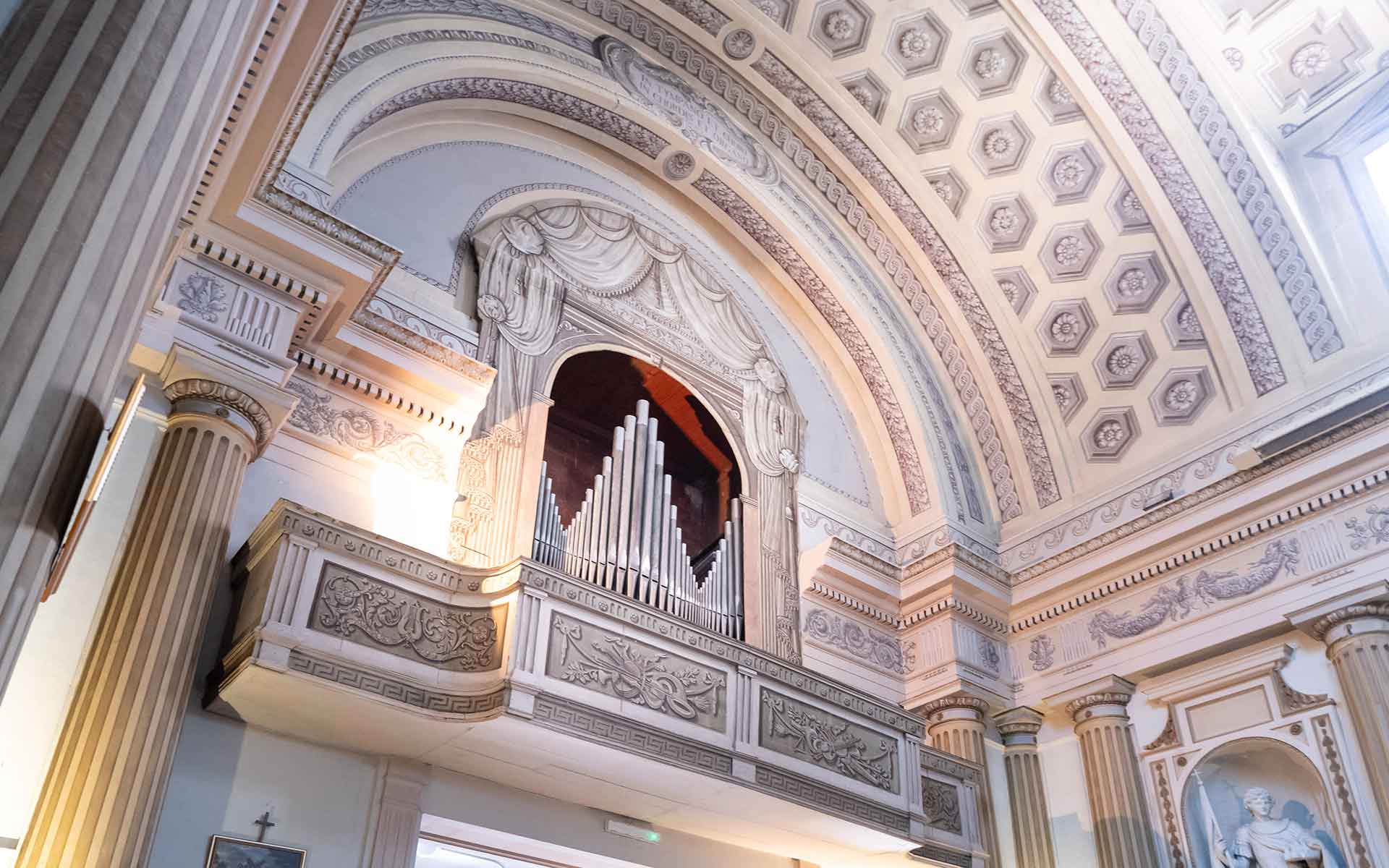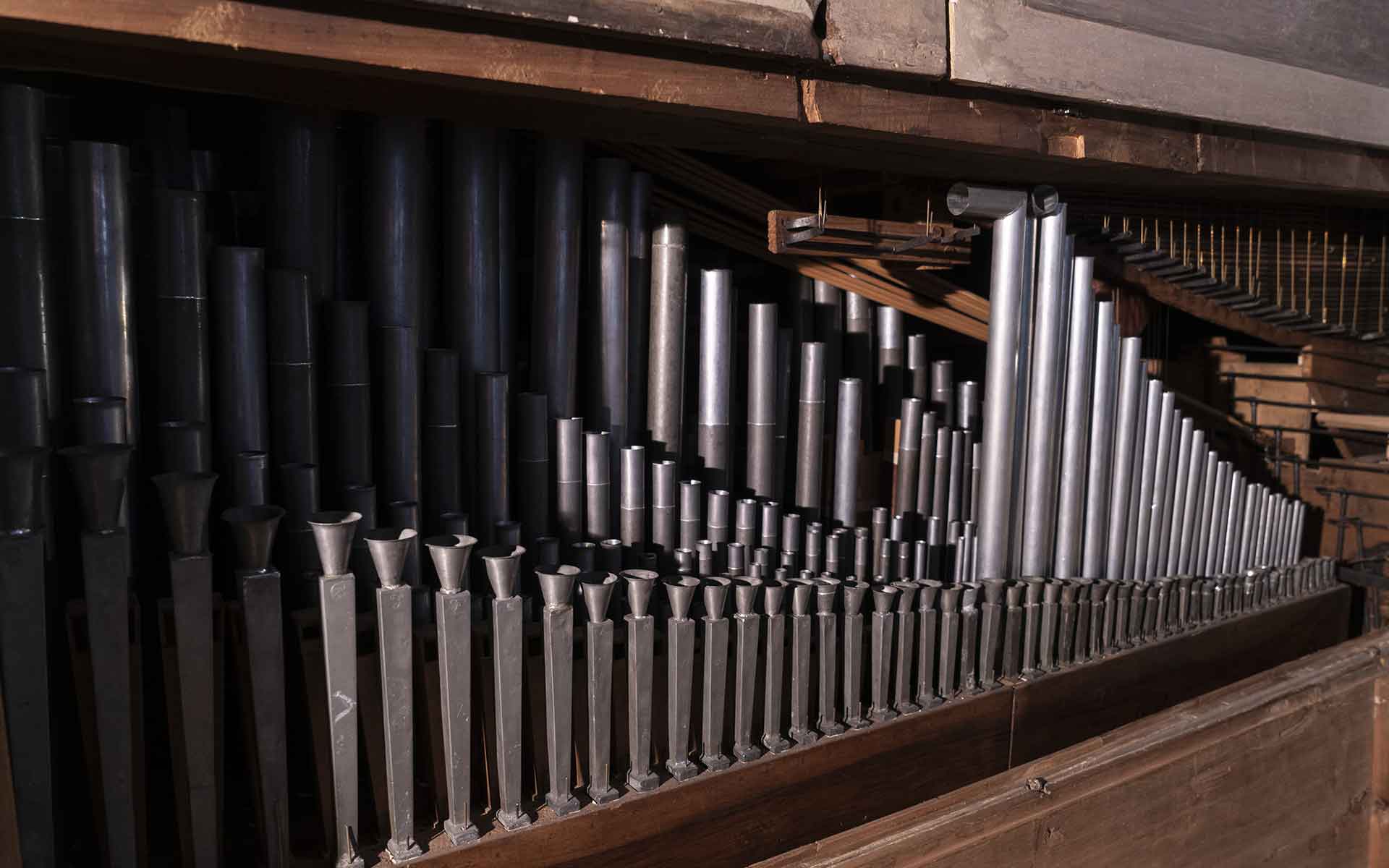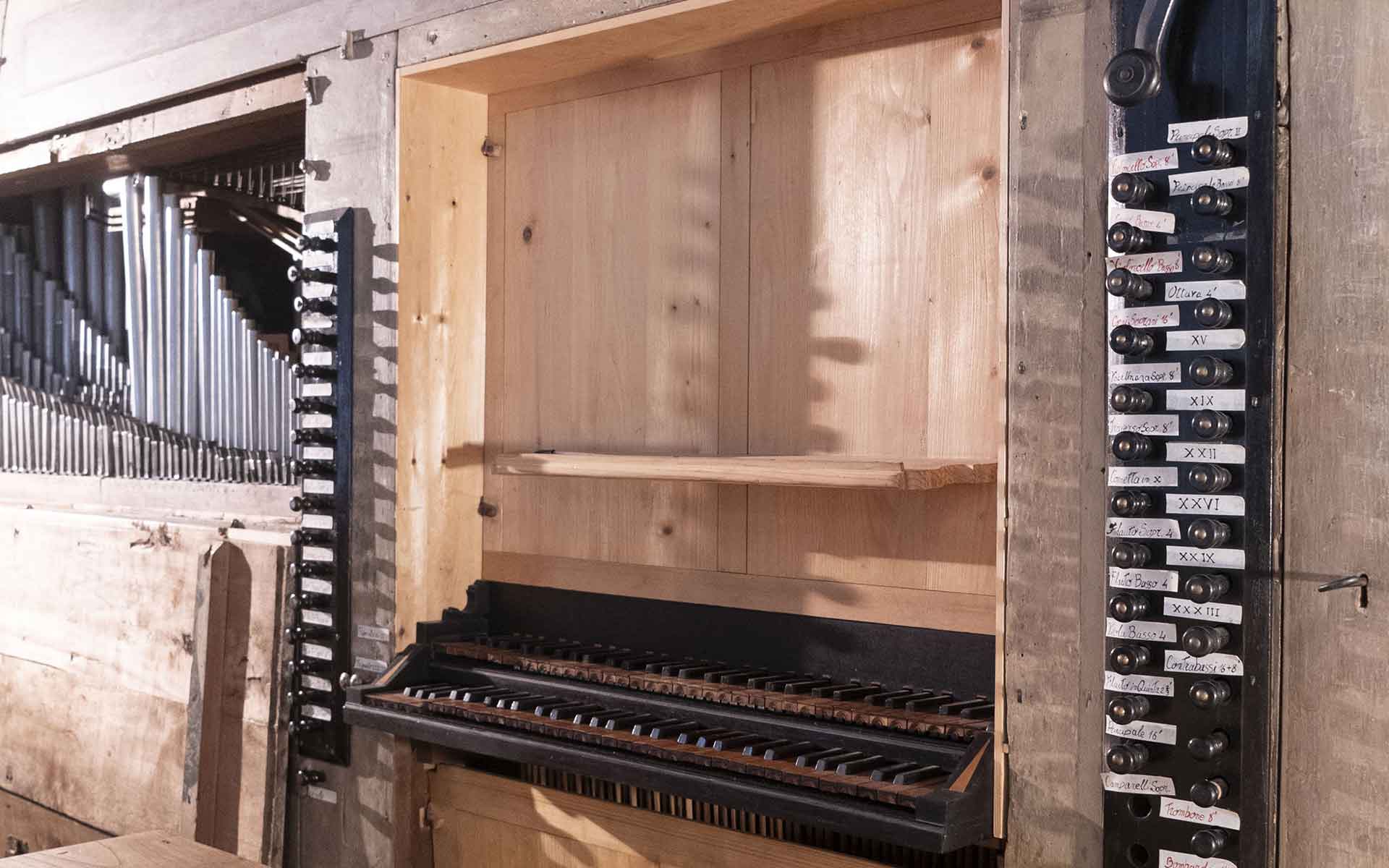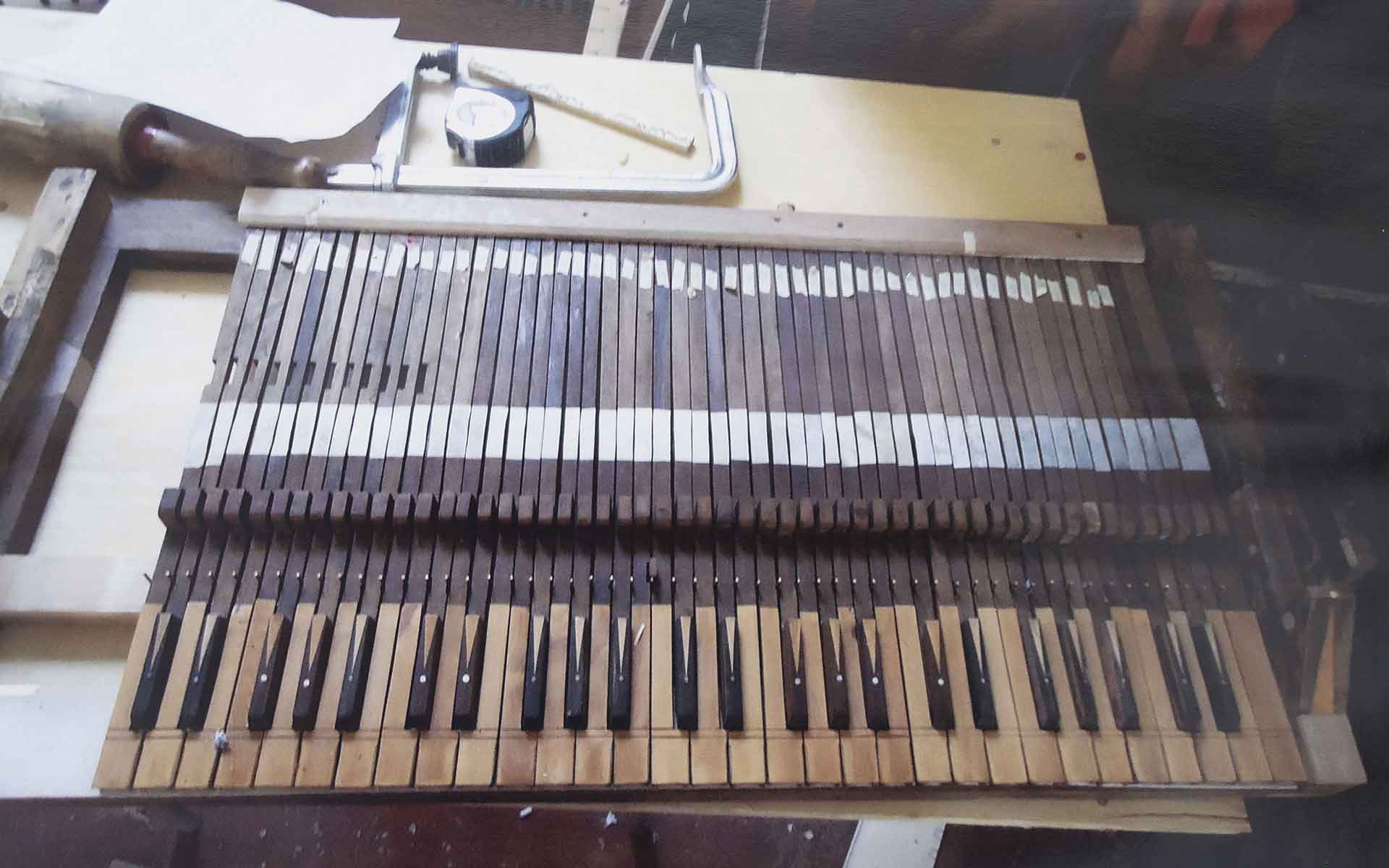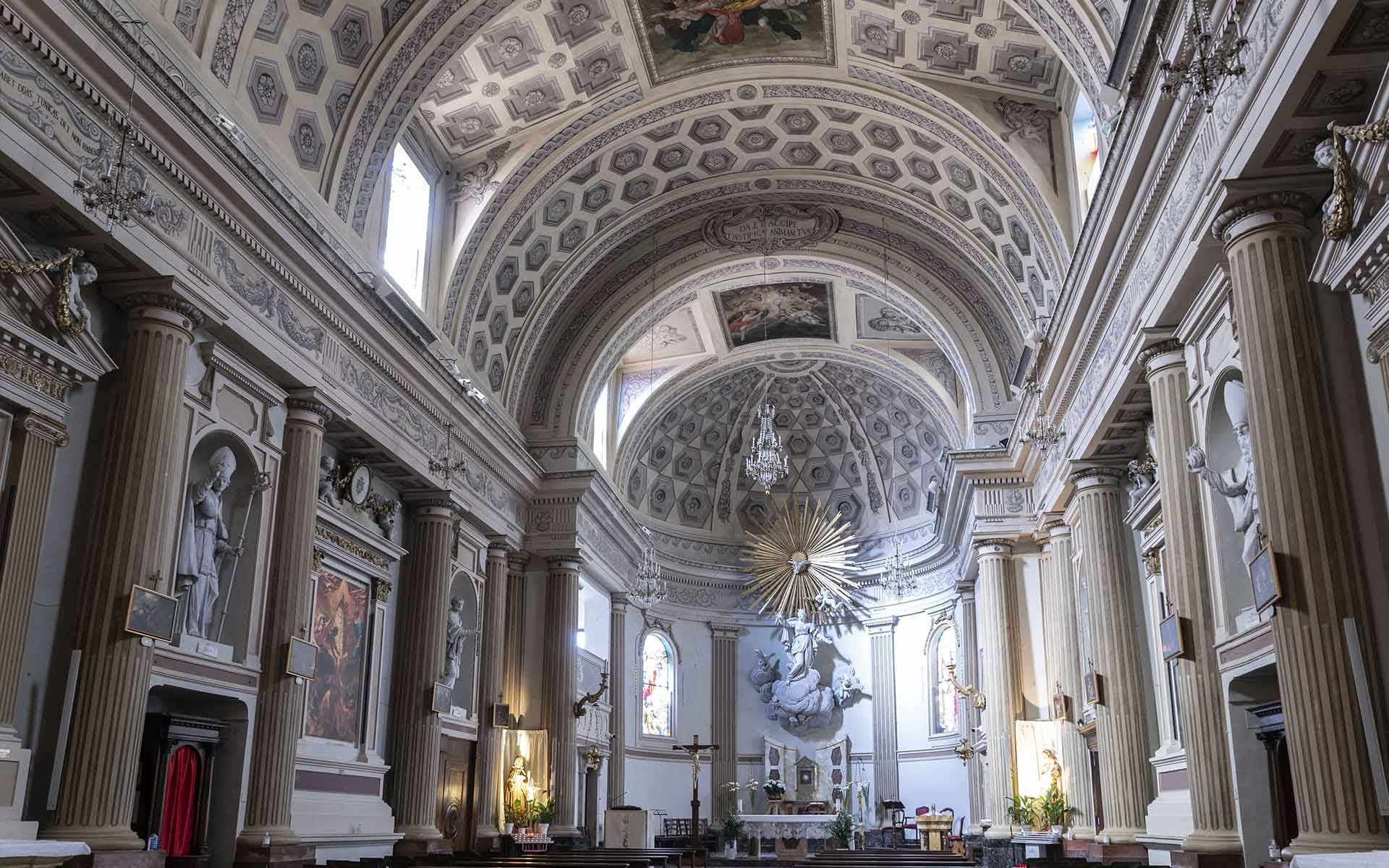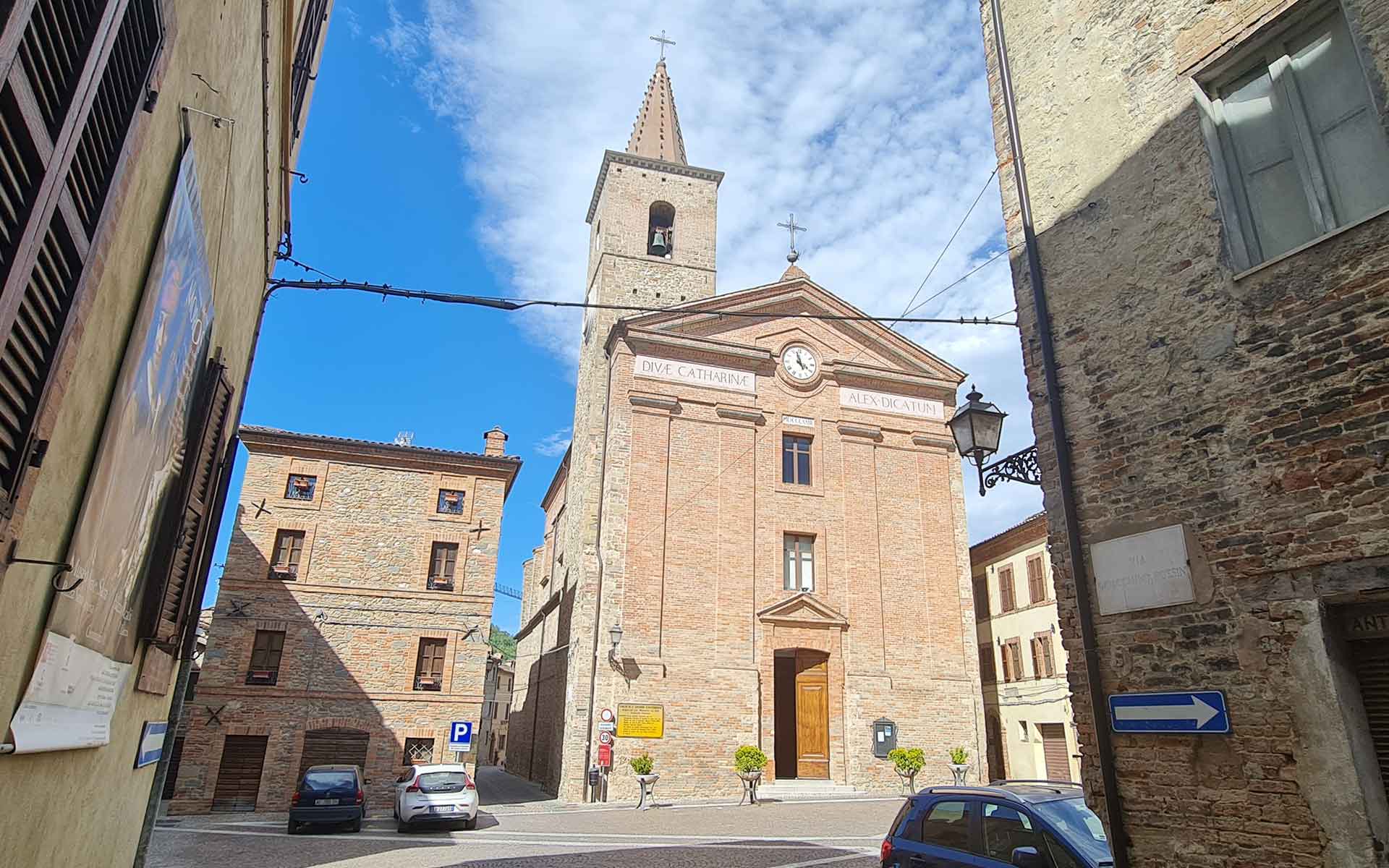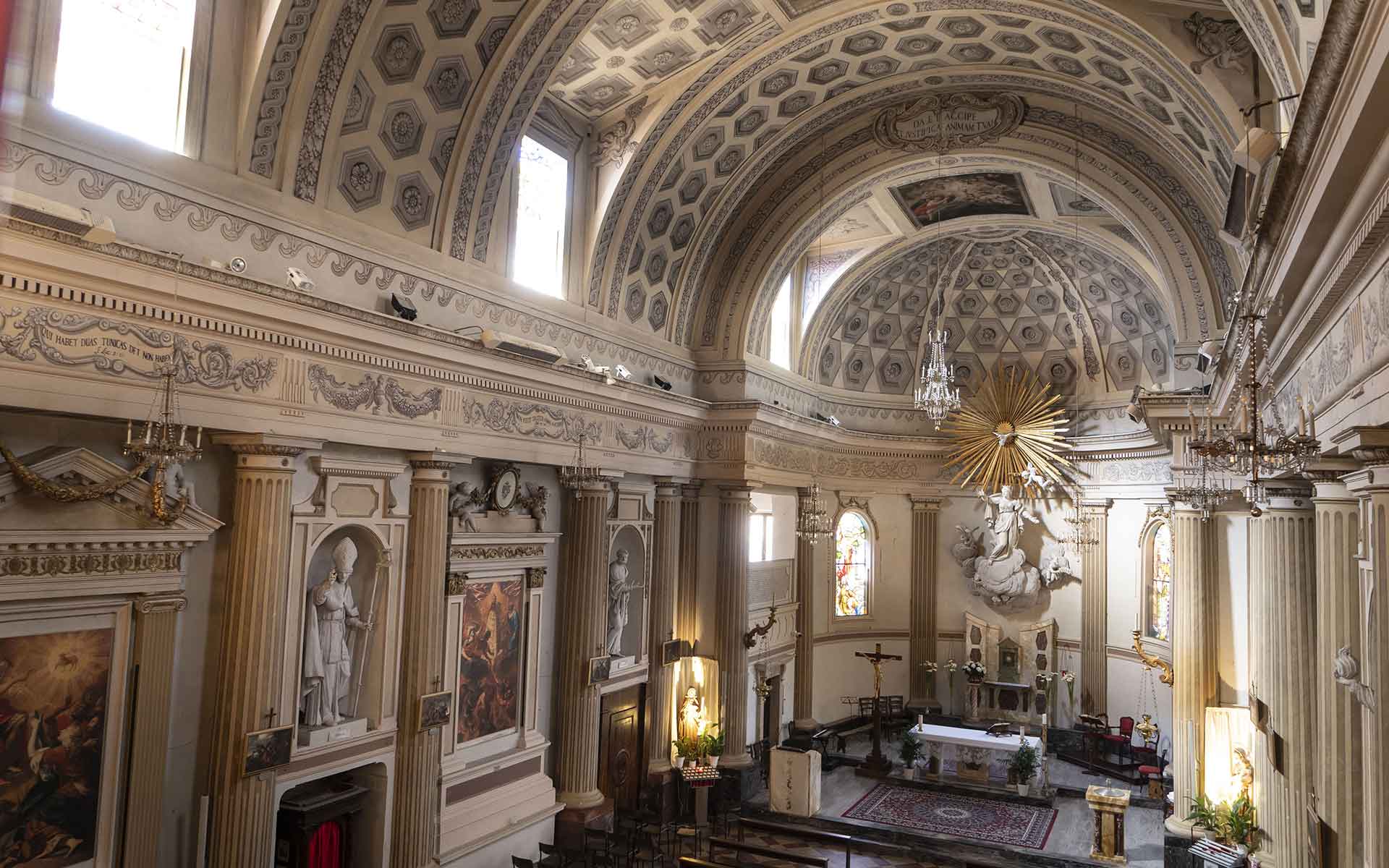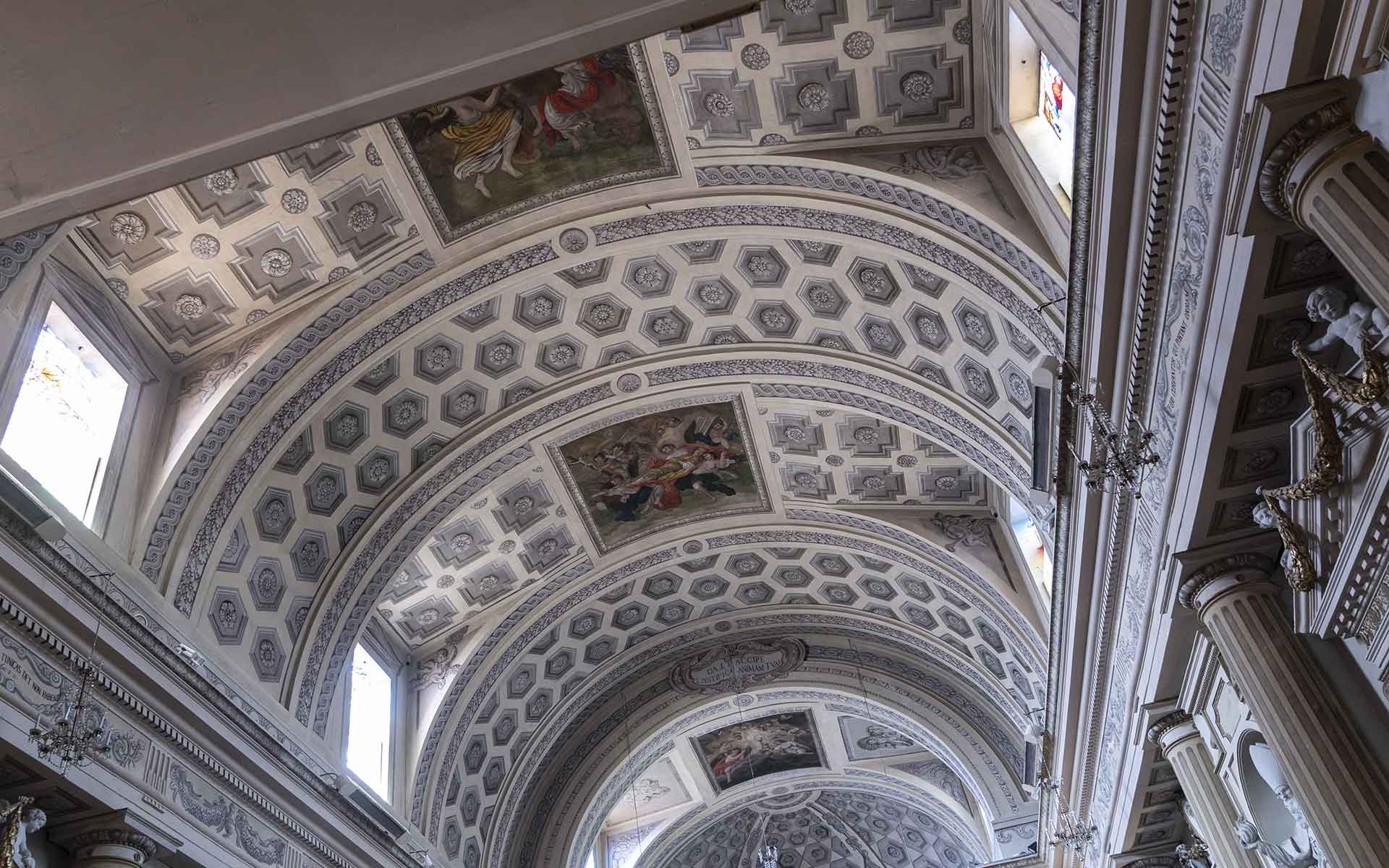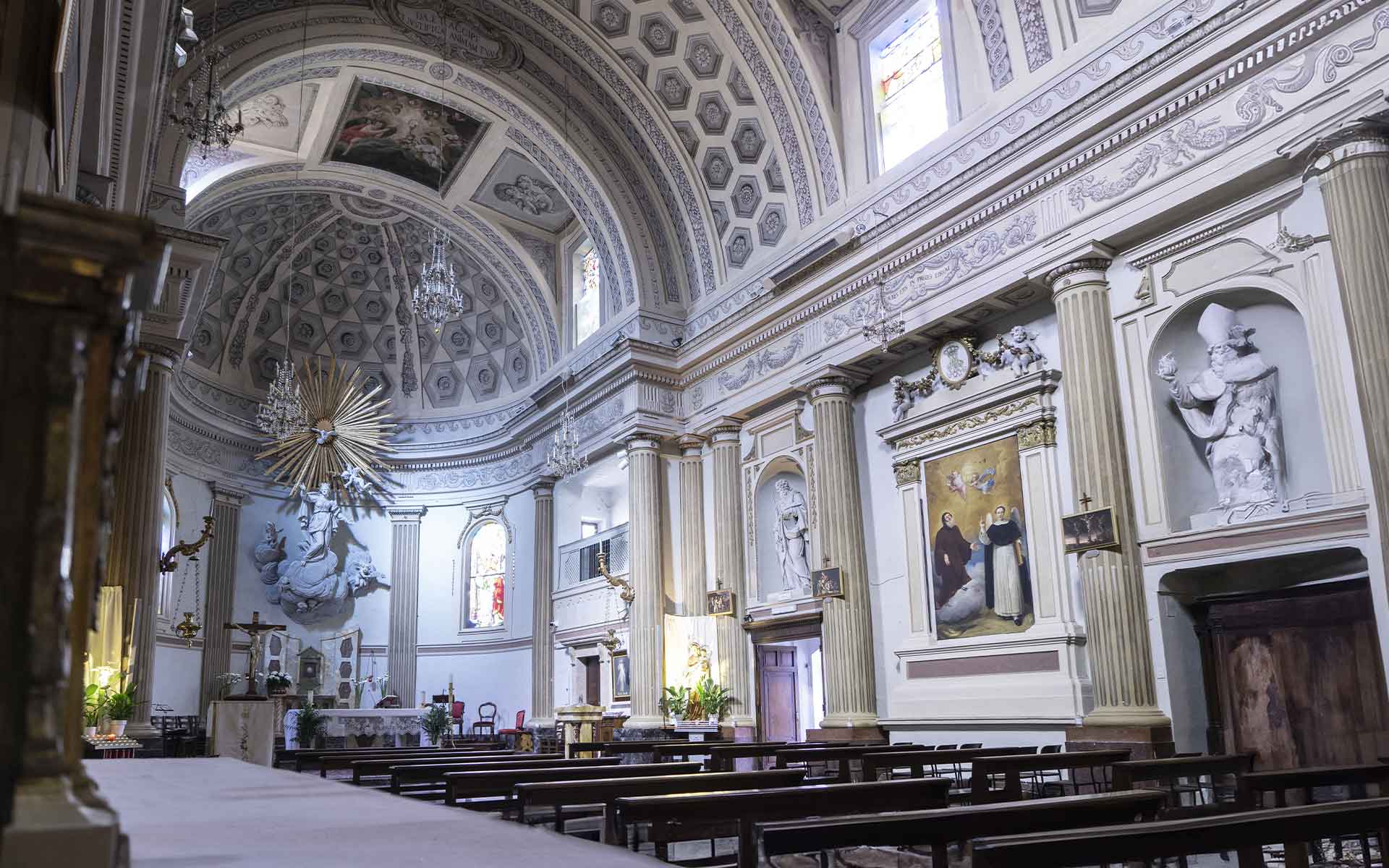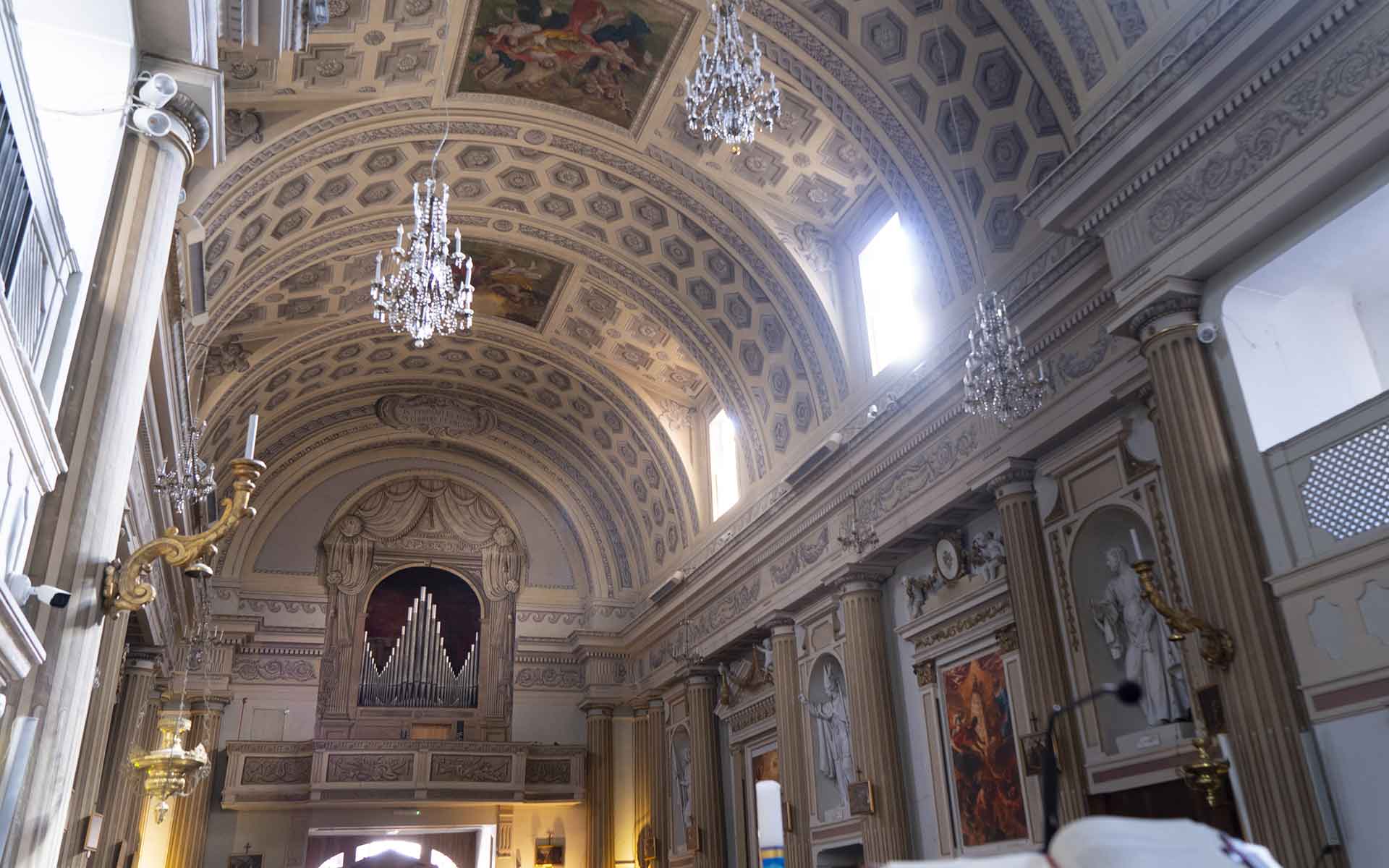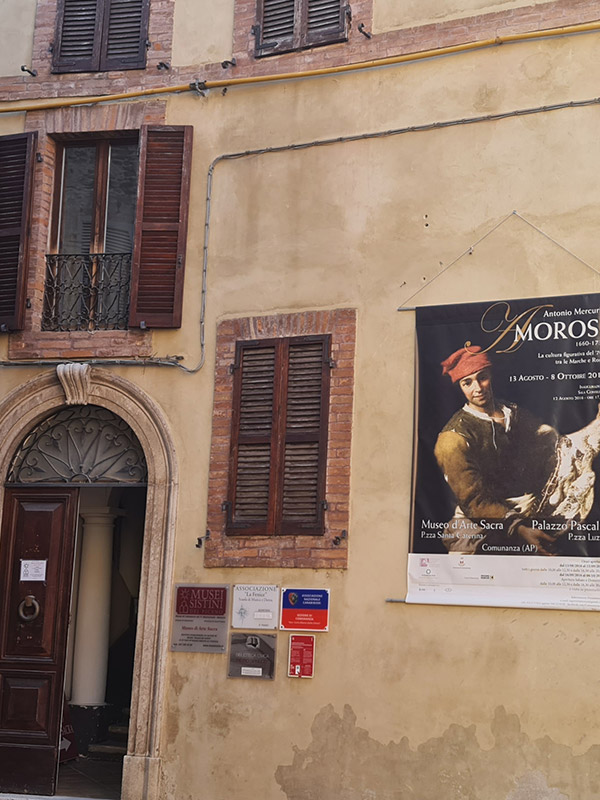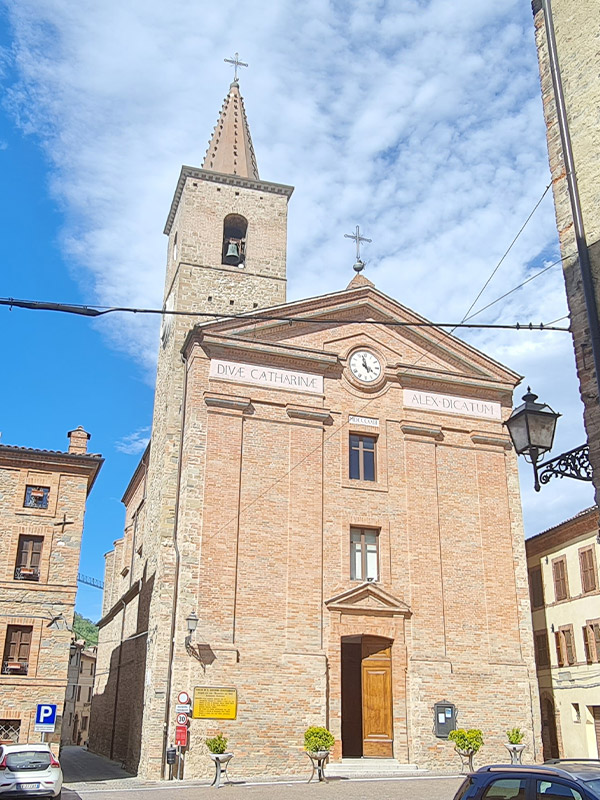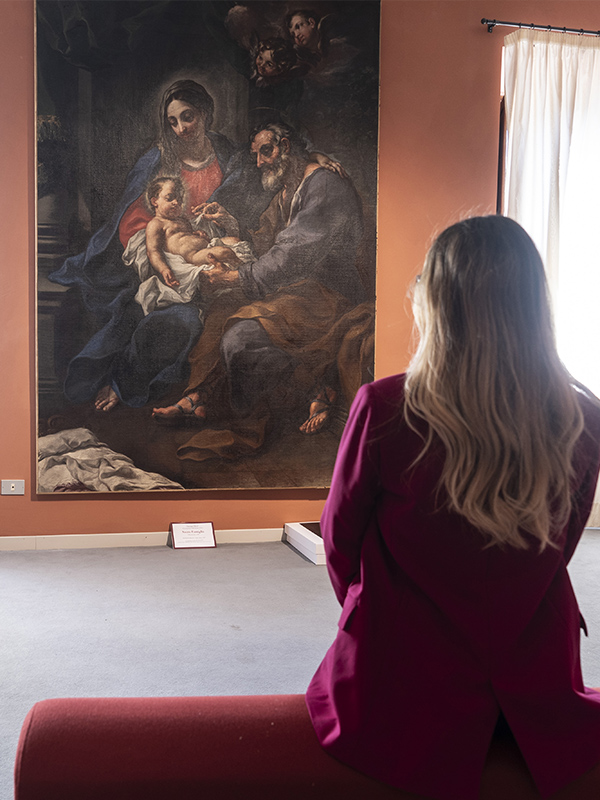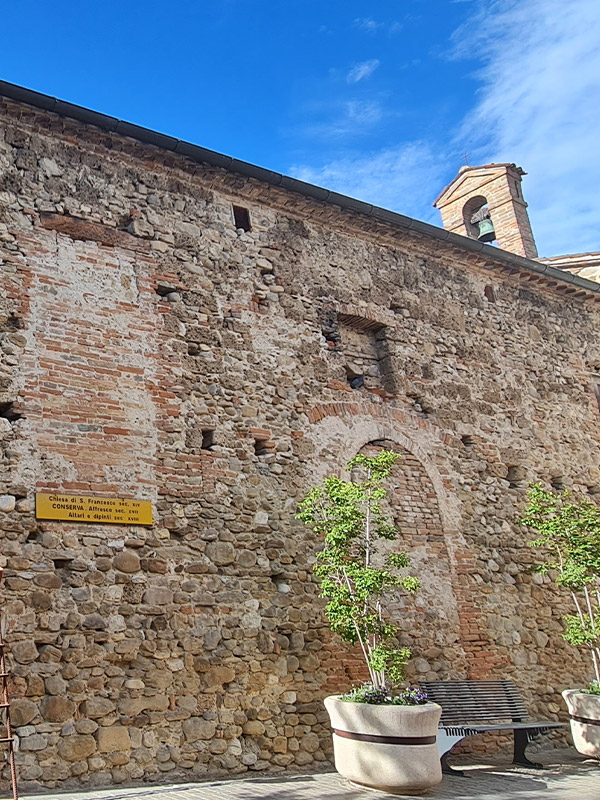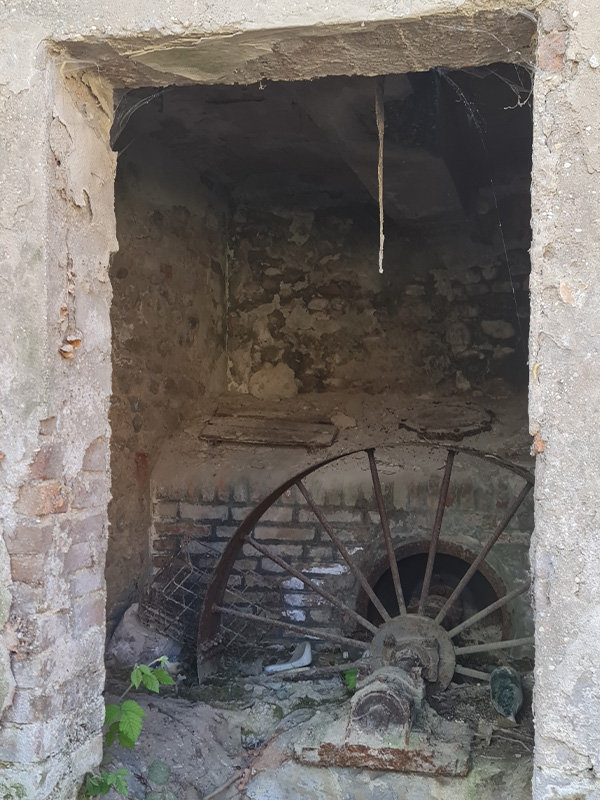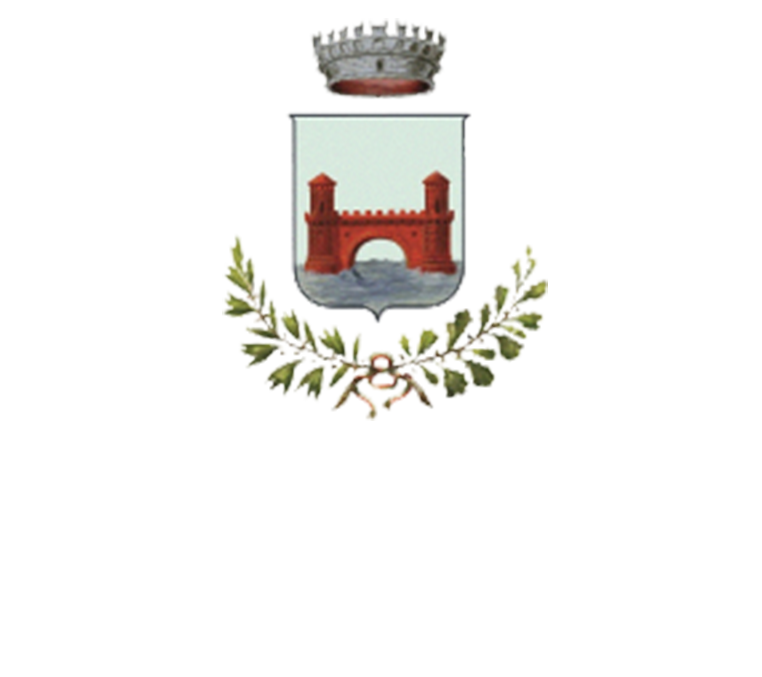
COMUNE DI COMUNANZA (AP)
Museo Arte Sacra e Biblioteca Civica "Pietro Spinucci"
Museum of Sacred Arts and “Pietro Spinucci” Public Library
Chiesa S. Caterina d'Alessandria d'Egitto e Organo Munumentale Barocco
Church of St. Catherine of Alexandria and Monumental Baroque Organ
La Dinastia Ghezzi
The Ghezzi Family
Chiesa S. Francesco
Church of St. Francis
Ex Mulino e Centralina Idroelettrica
Former Watermill and Hydro-power plant
CHIESA DI S. CATERINA D’ALESSANDRIA D’EGITTO
Church of St. Catherine of Alexandria
La splendida Chiesa Matrice di Comunanza è un tesoro storico e artistico. La chiesa, originariamente registrata nel catasto ascolano del 1381 come “Ecclesia Sancta Catarina into Castrum”, è stata demolita nel 1818 e poi riedificata nel 1831, con il suo campanile romanico originale integrato nella facciata.
L’esterno della chiesa presenta un design lineare in stile neoclassico, creato dall’architetto ticinese Carlo Maggi su disegno del celebre zio Pietro Maggi. L’interno, anch’esso neoclassico con alcune influenze barocche negli altari laterali, offre uno spazio unico diviso in tre campate, arricchito da opere d’arte, statue di Santi e stucchi dell’artista ascolano Domenico Paci. La Via Crucis di scuola carraccesca del XVII secolo aggiunge un tocco suggestivo all’atmosfera della chiesa.
Tra le opere di grande valore, spiccano due dipinti su tela negli altari laterali, raffiguranti “S. Giovanni Battista, S. Giuliana e le anime purganti” e “La Vergine di Loreto, S. Giuseppe, S. Michele Arcangelo e le anime purganti”. Queste opere sono state realizzate da Giuseppe e Pier Leone Ghezzi e Antonio Mercurio Amorosi, artisti eclettici di Comunanza, attivi tra il XVII e il XVIII secolo nella gloriosa epoca della Roma Barocca.

The splendid Mother Church of Comunanza is a historical and artistic treasure. The church, originally recorded in the Ascoli cadastre of 1381 as “Ecclesia Sancta Catarina into Castrum,” was demolished in 1818 and then rebuilt in 1831, with its original Romanesque bell tower integrated into the facade.
The exterior of the church features a linear neoclassical design, created by the Ticino architect Carlo Maggi following a design by the renowned Pietro Maggi, his uncle. The interior, also neoclassical with some Baroque influences in the side altars, offers a unique space divided into three bays, enriched with artworks, statues of saints, and stuccos by the Ascoli artist Domenico Paci. The seventeenth-century Carracci school Stations of the Cross add a suggestive touch to the atmosphere of the church.
Among the valuable works, two canvas paintings in the side altars stand out, depicting “St. John the Baptist, St. Juliana, and the souls in Purgatory” and “The Virgin of Loreto, St. Joseph, St. Michael the Archangel, and the souls in Purgatory.” These works were created by Giuseppe and Pier Leone Ghezzi and Antonio Mercurio Amorosi, eclectic artists from Comunanza, active between the seventeenth and eighteenth centuries in the glorious era of Baroque Rome.
ORGANO MONUMENTALE BAROCCO
Monumental Baroque organ
Particolarmente notevole è l’organo monumentale barocco a due tastiere, un autentico gioiello proveniente dalla Basilica di Loreto e arrivato a Comunanza nel 1827 durante la ricostruzione della Chiesa Matrice. Riscoperto nel 2003, questo straordinario strumento è unico nel suo genere e ha attirato l’attenzione di rinomati organologi. Risalente al XVII secolo, con aggiunte nel XVIII e nel 1858, l’organo è un esempio raro di autenticità barocca sopravvissuto alla scuola organaria veneta.
L’organo è stato restaurato da parte degli esperti organari Barthélémy e Michel Formentelli, con laboratori a Verona e Camerino ed è stato restituito alla comunità, offrendo sonorità che risuonano da secoli.

Particularly remarkable is the Monumental Baroque Organ with two keyboards, an authentic jewel originating from the Basilica of Loreto and arriving in Comunanza in 1827 during the reconstruction of the Mother Church. Rediscovered in 2003, this extraordinary instrument is unique in its kind and has attracted the attention of renowned organologists. Dating back to the seventeenth century, with additions in the Eighteenth Century and in 1858, the organ is a rare example of Baroque authenticity that survived the Venetian organ-making school.
The organ has been restored by the expert organ builders Barthélémy and Michel Formentelli, with workshops in Verona and Camerino, and has been returned to the community, offering sounds that have resonated for centuries.
Si ringrazia per i testi la D.ssa Stefania Cespi Presidente Archeoclub del Comune di Comunanza
VAI ALLA SCHEDA SU ADRIANO LUZI
ALCUNE IMMAGINI
I PUNTI DI INTERESSE
Museo Arte Sacra e Biblioteca Civica
Chiesa S. Caterina e Organo Barocco
La Dinastia Ghezzi
Chiesa S. Francesco
Ex Mulino a Acqua
VIDEO TOUR DI COMUNANZA


